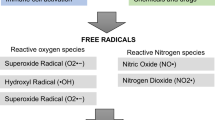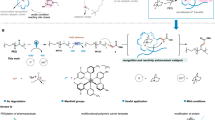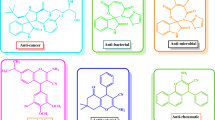Abstract
THE mechanism of the thermolysis of diethyl peroxide is uncertain. Harris and Egerton believed the reaction to be a straightforward, unimolecular decomposition, although they observed short induction periods with some samples and generally much longer ones in the presence of nitric oxide1. The products suggest the occurrence of reactions involving free radicals, and in the opinion of Neumann2 the decomposition is a chain reaction. It is, however, difficult to reconcile a significant participation of free radicals in the decomposition with the first-order kinetics and the low activation energy (c. 31 k.cal.), compared with accepted dissociation energies of O—O bonds (HO—OH, 54 k.cal.3, t.BuO—Ot.Bu. 39 k.cal. 4).
This is a preview of subscription content, access via your institution
Access options
Subscribe to this journal
Receive 51 print issues and online access
$199.00 per year
only $3.90 per issue
Buy this article
- Purchase on SpringerLink
- Instant access to full article PDF
Prices may be subject to local taxes which are calculated during checkout
Similar content being viewed by others
References
Proc. Roy. Soc., A, 168, 1 (1938).
Blat, Gerber and Neumann, Acta Physicochim., U.R.S.S., 10, 273 (1939). Neumann and Tutakin, Acta Physicochim., U.R.S.S., 9, 861 (1938).
Giguere, Canad. J. Res., B, 28, 17 (1950).
Rust, Seubold and Vaughan, J. Amer. Chem. Soc., 72, 338 (1950).
Mortlock and Style (see preceding communication).
Author information
Authors and Affiliations
Rights and permissions
About this article
Cite this article
JENKINS, A., STYLE, D. Inhibition of the Thermal Decomposition of Diethyl Peroxide. Nature 170, 706 (1952). https://doi.org/10.1038/170706b0
Issue date:
DOI: https://doi.org/10.1038/170706b0



